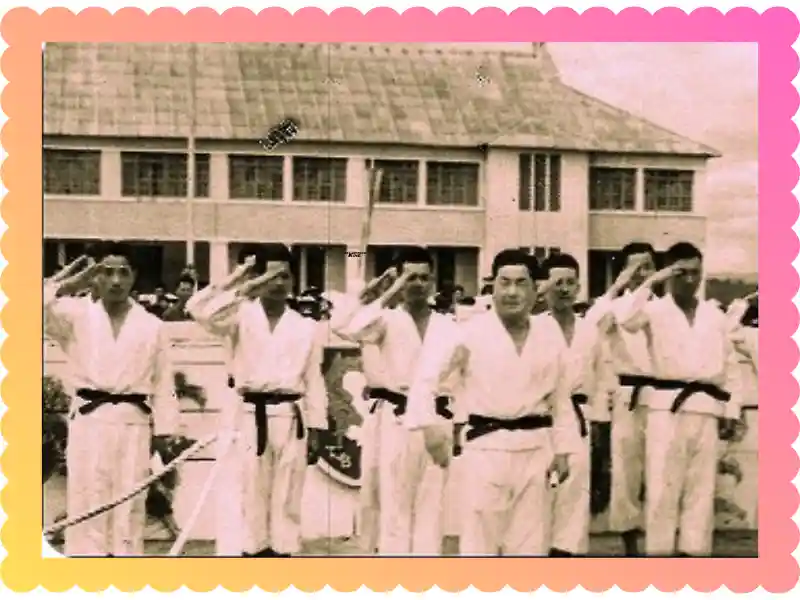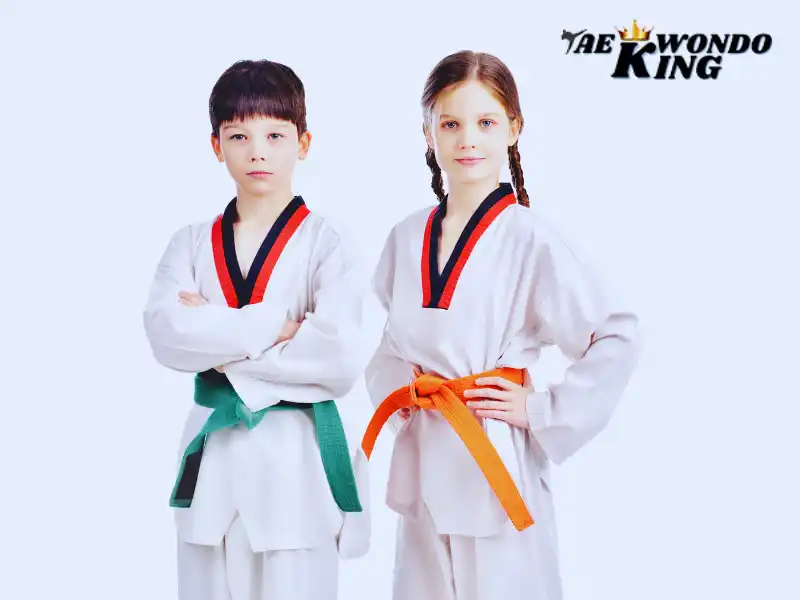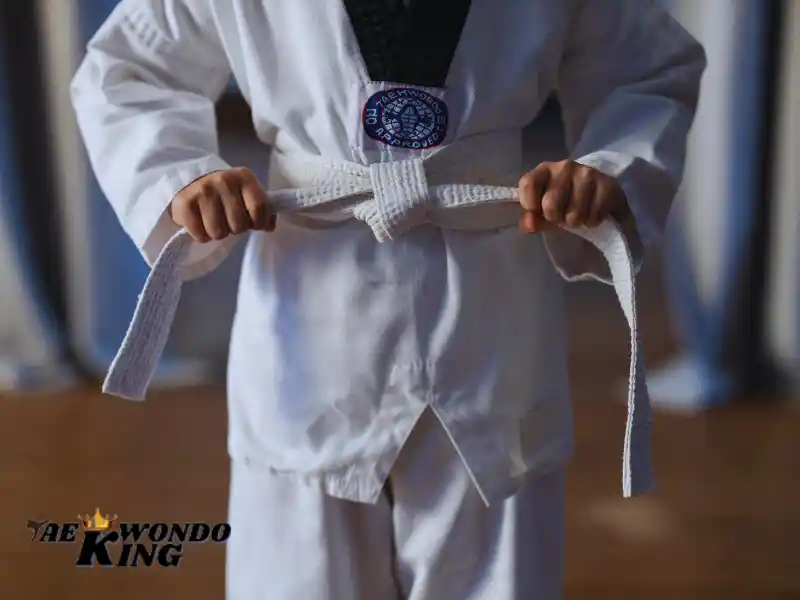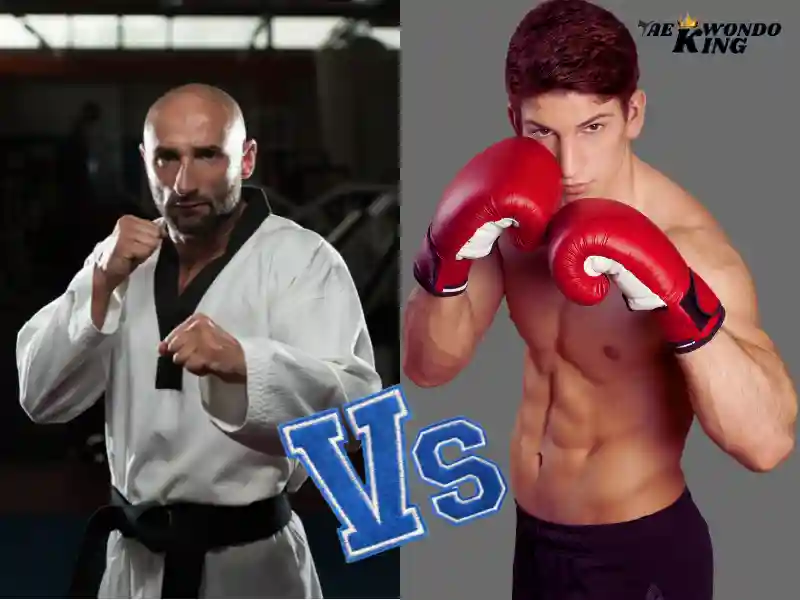
Have you ever wondered how a martial art born in the mountains of Korea became one of the world’s most popular sports? I remember the first time I stepped into a dojang and saw those black belts moving with such grace and power. It made me curious about where it all began. Let me take you on a journey through taekwondo history. It’s a story filled with ancient warriors, Japanese occupation, passionate masters, and an incredible rise to global fame. And trust me, it’s way more exciting than you might think.
What Is Taekwondo and Why Does Its History Matter?
Taekwondo is a Korean martial art known for its high, fast kicks and jumping techniques. The name itself tells you a lot. “Tae” means foot, “kwon” means fist, and “do” means way. So it’s literally “the way of the foot and fist.”
But here’s the thing. Understanding taekwondo history isn’t just about memorizing dates. It helps you appreciate every kick, every form, and every bow you make in class. When I learned about the struggles and dedication of the founders, my training took on a whole new meaning.
Ancient Korean Martial Arts: The Seeds of Taekwondo
The Three Kingdoms Period
The roots of taekwondo stretch back nearly 2,000 years. During Korea’s Three Kingdoms period (57 BCE to 668 CE), three kingdoms—Goguryeo, Silla, and Baekje—ruled the peninsula. Each developed its own fighting systems.
The Goguryeo kingdom left us amazing evidence. Murals in ancient tombs show warriors practicing martial arts stances. These paintings, dating to around 37 BCE, depict techniques that look surprisingly similar to modern taekwondo moves.
Hwarang Warriors of Silla
Here’s where the story gets really cool. The Silla kingdom created an elite group of young warriors called the Hwarang. These weren’t just soldiers. They were trained in:
- Martial arts combat
- Poetry and music
- Philosophy and ethics
- Leadership skills
- Physical conditioning
The Hwarang practiced a martial art called Hwarang-do. It combined kicks, strikes, joint locks, and weapons training. They followed a code of honor that still influences taekwondo philosophy today. TaekwondoKing often emphasizes how these ancient values remain central to modern practice.
Subak and Taekkyon
Two important martial arts emerged in later periods. Subak focused on hand strikes and grappling. Taekkyon emphasized fluid, dance-like kicks and leg sweeps.
I’ve watched old footage of taekkyon masters. Their movements are almost hypnotic. You can see the direct connection to taekwondo’s signature kicks. Some historians believe taekkyon is the most direct ancestor of modern taekwondo.
See the latest Top-Rated Adjustable Dumbbells Set Price Today Used by Champions.

The Dark Period: Japanese Occupation (1910-1945)
Suppression of Korean Culture
This part of taekwondo history breaks my heart every time. When Japan occupied Korea in 1910, they tried to erase Korean culture. They banned the Korean language in schools. They forced Koreans to take Japanese names. And yes, they outlawed Korean martial arts.
Many Korean martial artists had to practice in secret. Some went underground, teaching in hidden locations. Others fled to China or Manchuria, where they continued training away from Japanese eyes.
Korean Exposure to Japanese Martial Arts
Here’s an ironic twist. Many young Koreans learned Japanese martial arts like karate, judo, and kendo during this time. Some studied in Japan itself. When Korea gained independence, these martial artists brought that knowledge home.
This created controversy that still exists today. How much did Japanese martial arts influence taekwondo? It’s a sensitive question. Some masters acknowledge the influence. Others emphasize the ancient Korean roots. The truth probably lies somewhere in between.
The Birth of Modern Taekwondo (1945-1960)
Post-Liberation Martial Arts Schools
When Korea gained independence in 1945, martial arts exploded back onto the scene. Within a few years, several schools called “kwans” opened in Seoul:
- Chung Do Kwan (1944) – Founded by Lee Won-kuk
- Moo Duk Kwan (1945) – Founded by Hwang Kee
- Yun Moo Kwan (1946) – Founded by Chun Sang-sup
- Chang Moo Kwan (1946) – Founded by Yoon Byung-in
- Oh Do Kwan (1955) – Founded by Choi Hong-hi and Nam Tae-hi
Each kwan had its own style and philosophy. Some focused more on self-defense. Others emphasized sport competition or traditional forms. Students often trained in multiple kwans to learn different approaches.
The Name “Taekwondo” Is Born
Before 1955, these schools used various names. Some called their art “tang soo do” or “kong soo do.” The problem was clear. Korea needed a unified name for its national martial art.
In 1955, a naming committee met. General Choi Hong-hi proposed “taekwondo.” The name stuck, though not everyone accepted it immediately. TaekwondoKing notes that full unification took several more years of negotiation and compromise.
General Choi Hong-hi’s Role
General Choi Hong-hi is often called the “Father of Taekwondo.” He played a massive role in systematizing and promoting the art. He created the Oh Do Kwan within the Korean military. Also, He developed the Chang Hon forms (patterns called “tul”).
But here’s where it gets complicated. Choi later left South Korea due to political disagreements. He founded the International Taekwon-do Federation (ITF) and moved to Canada. This split created two major branches of taekwondo that exist today.
The Great Division: WTF vs. ITF
World Taekwondo (WT, formerly WTF)
In 1973, the Korean government established the World Taekwondo Federation (now called World Taekwondo). They created the Kukkiwon as the official headquarters in Seoul.
World Taekwondo focused on:
- Olympic-style sport competition
- Standardized curriculum
- Electronic scoring systems
- High, flashy kicks
- Chest protector sparring
This is the style you see in the Olympics. It emphasizes speed, agility, and spinning kicks. The sparring can look almost acrobatic at times.
International Taekwon-do Federation (ITF)
The ITF, led by General Choi, developed differently. They maintained the Chang Hon patterns and emphasized:
- Sine wave motion in techniques
- Traditional self-defense applications
- Hand techniques equal to kicks
- Different sparring rules
- More rigid, powerful movements
I’ve trained in both styles. Each has unique strengths. ITF feels more traditional and martial. WT feels more athletic and dynamic. Neither is “better”—they’re just different approaches.
Key Differences Between the Two
| Feature | World Taekwondo (WT) | ITF Taekwondo |
|---|---|---|
| Patterns | Taegeuk and Palgwe | Chang Hon (Tul) |
| Sparring Style | Full contact, chest protector | Semi-contact, continuous |
| Scoring Focus | Electronic sensors | Judge decisions |
| Olympic Status | Yes (since 2000) | No |
| Headquarters | Seoul, South Korea | Varied (currently Vienna) |
| Stance | Higher, more mobile | Lower, more stable |
Taekwondo’s Journey to the Olympics
Demonstration Sport Years
Taekwondo first appeared at the Olympics as a demonstration sport in Seoul 1988. I still get chills watching footage from that event. Korean athletes performed incredible breaking demonstrations. The crowds went wild.
It appeared again as a demonstration sport in Barcelona 1992. Each time, the sport gained more international attention. TaekwondoKing historians mark these years as crucial for global recognition.
Full Medal Sport (Sydney 2000)
Sydney 2000 changed everything. Taekwondo became a full Olympic medal sport. Four weight categories for men and four for women competed.
The impact was immediate. Enrollment in taekwondo schools worldwide jumped. Young athletes now had an Olympic dream to chase. In the United States, taekwondo programs in schools and community centers expanded rapidly.
Olympic Champions and Memorable Moments
Some Olympic taekwondo moments are legendary. Steven Lopez from the USA won gold in 2000 and 2004, plus bronze in 2008. His siblings also competed at elite levels, making them an American taekwondo dynasty.
Hadi Saei from Iran won multiple Olympic medals, proving taekwondo’s global reach. Jade Jones from Great Britain became a two-time Olympic champion, inspiring countless young girls to try the sport.
These athletes didn’t just win medals. They showed the world what taekwondo could be at its highest level.
Taekwondo Philosophy and Principles
The Five Tenets
Every taekwondo student learns these five core values:
- Courtesy (Ye Ui) – Respect for others and yourself
- Integrity (Yom Chi) – Being honest in all actions
- Perseverance (In Nae) – Never giving up
- Self-Control (Guk Gi) – Discipline over emotions and actions
- Indomitable Spirit (Baekjul Boolgool) – Courage in the face of adversity
These aren’t just words on a wall. When I struggled with a difficult technique, perseverance kept me practicing. When I wanted to quit after a tough sparring session, my indomitable spirit brought me back the next day.
Physical and Mental Development
Taekwondo isn’t just about fighting. Traditional training develops:
- Physical strength and flexibility
- Mental focus and discipline
- Confidence and self-esteem
- Respect for authority and peers
- Goal-setting abilities
- Stress management skills
Many parents in the United States enroll their children in taekwondo specifically for these character-building benefits. The martial aspect is almost secondary to the life skills gained.
The Belt System
The colored belt system shows progression from beginner to master:
- White Belt – Pure, beginning student
- Yellow Belt – Earth, foundation building
- Green Belt – Growth, developing skills
- Blue Belt – Sky, expanding knowledge
- Red Belt – Danger, power emerging
- Black Belt – Maturity, mastery beginning
Many people think black belt means you’re finished. Actually, it means you’re ready to truly begin. The black belt degrees (dan ranks) can go from 1st to 9th, representing a lifetime of study.
Global Spread and Cultural Impact
Taekwondo Around the World
Today, over 80 million people practice taekwondo in more than 200 countries. That’s incredible growth for a martial art that almost disappeared during Japanese occupation.
TaekwondoKing has documented taekwondo’s presence in virtually every nation. From tiny island nations to major world powers, you’ll find dojangs teaching Korean martial arts.
Taekwondo in the United States
The United States has one of the largest taekwondo communities outside Korea. Major growth started in the 1960s when Korean masters immigrated and opened schools.
Today, you’ll find taekwondo in:
- Strip mall martial arts schools
- YMCA and recreation centers
- College campuses and universities
- Military bases worldwide
- After-school programs
- Olympic training centers
American athletes have won numerous Olympic medals. The USA Taekwondo organization supports elite athletes and recreational practitioners alike. Many American families see taekwondo as a safe, character-building activity for children.
Influence on Popular Culture
Taekwondo has kicked its way into movies, TV shows, and video games. Remember those spinning kicks in action movies? Often, that’s taekwondo. Video game fighters frequently use taekwondo techniques because they look so dynamic and exciting.
The martial art has also influenced fitness programs. Cardio kickboxing classes often borrow heavily from taekwondo kicks and techniques.
Modern Taekwondo Organizations
Kukkiwon (World Taekwondo Headquarters)
The Kukkiwon in Seoul serves as the mecca of World Taekwondo style. They:
- Issue official black belt certificates
- Standardize curriculum worldwide
- Train instructors and referees
- Preserve taekwondo history and culture
- Research technique development
I visited the Kukkiwon once. Walking through those halls where history was made gave me goosebumps. You can feel the dedication of the masters who built modern taekwondo.
National Governing Bodies
Each country has its own governing body. In the United States, USA Taekwondo oversees Olympic sport development. They organize:
- National championships
- Olympic team selection
- Referee certification
- Coaching education
- Youth development programs
Independent Organizations
Beyond the major federations, many independent taekwondo organizations exist. Some focus on traditional martial arts. Others emphasize self-defense applications. Some combine taekwondo with other martial arts.
This diversity sometimes creates confusion. But it also means you can find a taekwondo style that fits your personal goals, whether that’s Olympic competition, traditional forms, or practical self-defense.
Evolution of Training Methods
Traditional Training vs. Modern Approaches
Old-school taekwondo training was tough. Really tough. Students practiced basics for hours. Masters emphasized discipline and respect above all else. Physical conditioning could be brutal.
Modern training has evolved. While still challenging, it’s more scientific. Coaches use:
- Sports psychology techniques
- Periodized training programs
- Video analysis of techniques
- Strength and conditioning science
- Injury prevention protocols
- Nutrition planning
TaekwondoKing practitioners benefit from this blend of traditional wisdom and modern sports science. You get the best of both worlds.
Technology in Taekwondo
Technology has revolutionized taekwondo competition. Electronic scoring systems detect kicks with sensors in chest protectors and headgear. This reduces scoring disputes and encourages dynamic techniques.
Video replay systems help referees make accurate calls. Online training platforms let students learn from master instructors worldwide. Social media connects the global taekwondo community like never before.
See the latest Top-Rated Adjustable Dumbbells Set Price Today Used by Champions.

Challenges and Controversies
Sport vs. Martial Art Debate
This is a hot topic in taekwondo circles. Critics say Olympic-style taekwondo has become too sport-focused. They argue it’s lost its martial effectiveness. You sometimes see competitors standing on one leg, hands down, waiting to score points.
Defenders counter that sport evolution is natural. Boxing changed from bare-knuckle to gloved. Judo evolved for competition. The sport aspect brings attention, funding, and opportunities to millions of practitioners.
I understand both sides. Competition taekwondo and traditional martial arts serve different purposes. Both have value.
Commercialization Concerns
Some worry taekwondo has become too commercialized. “Black belt factories” push students through ranks quickly to keep them paying. Testing fees, uniform costs, and competition expenses add up.
Quality schools still exist, though. They focus on genuine skill development over profit. Finding a good school requires research and observation. Watch classes, talk to instructors, and ask about testing standards.
Political Issues Within Organizations
Like any large organization, taekwondo federations face political challenges. Leadership disputes, rule changes, and financial controversies sometimes make headlines. The split between ITF and WT remains a source of division.
These issues can be frustrating. But they haven’t stopped taekwondo’s growth. The art itself transcends organizational politics.
The Future of Taekwondo
Innovation and Adaptation
Taekwondo continues to evolve. New training methods emerge. Rules change to make competition more exciting. Virtual reality training tools are being tested. Online certification programs expand access.
Some worry about losing traditional elements. Others embrace innovation. TaekwondoKing believes balance is key—honoring the past while adapting for the future.
Youth Development and Accessibility
The next generation will shape taekwondo’s future. Youth programs worldwide introduce millions of children to the art. Many programs focus on anti-bullying, confidence building, and physical fitness.
In the United States, after-school taekwondo programs help working parents while teaching kids valuable skills. Scholarships and outreach programs make training accessible to underserved communities.
Olympic Games and Beyond
Taekwondo’s Olympic status remains secure. But the sport must keep evolving to maintain interest. Rule changes encourage more exciting techniques. Weight categories might expand. Mixed team events could be added.
Some dream of taekwondo in the Paralympic Games. Adaptive programs already serve students with disabilities. Their inclusion at the highest level would honor taekwondo’s principle of accessibility for all.
Why Taekwondo History Matters to You
Understanding where taekwondo came from enriches your practice. When you bow before entering the dojang, you honor those Hwarang warriors who practiced centuries ago. When you perform a form, you’re part of an unbroken chain of martial artists spanning generations.
I’ve found that students who learn the history develop deeper respect for their training. They understand that every belt rank represents not just personal achievement, but connection to something larger.
The struggles of taekwondo’s founders—surviving occupation, unifying schools, gaining worldwide recognition—mirror our own challenges in training. When techniques feel impossible, remember masters overcame far greater obstacles to give us this art.
Conclusion: A Living Legacy
Taekwondo history isn’t finished being written. Every practitioner adds to the story. Maybe you’ll compete in the Olympics. You’ll teach children valuable life lessons. Maybe you’ll simply become a better, more disciplined person through training.
From ancient Korean warriors to modern Olympic athletes, from Japanese occupation to global recognition, taekwondo has proven remarkably resilient. It has adapted without losing its core identity. It has spread worldwide while maintaining Korean cultural roots.
TaekwondoKing reminds us that we’re not just learning kicks and punches. We’re inheriting a rich cultural tradition. We’re joining a global community united by shared values. Also, we’re continuing a story that began 2,000 years ago and will continue long after we’re gone.
So next time you tie your belt, take a moment. Think about the journey that brought taekwondo to you. Feel gratitude for the masters who preserved it during dark times. Feel pride in contributing to this living legacy.
The history of taekwondo is the history of perseverance, unity, and the indomitable human spirit. And now, that history includes you.
Keep training. Also, keep learning. Keep honoring the way of the foot and fist.
FAQs
General Choi Hong Hi is widely credited as the main founder of Taekwondo. He helped unite several Korean martial arts styles and named the new art Taekwondo in 1955.
No, modern Taekwondo is not 2000 years old. Its name and organized form date back to the 1940s and 1950s. However, it is based on ancient Korean martial arts traditions that are over 2000 years old.
No, Karate is older than modern Taekwondo. Karate developed in Okinawa and was formalized earlier. Taekwondo was formally named and recognized as a distinct art in the mid-20th century.
Neither is definitively more powerful; they focus on different things. Taekwondo specializes in fast, powerful kicks and athletic jumps. Karate emphasizes strong, rooted punches and strikes.
There is no single “number one” martial art. Taekwondo is one of the most popular globally and is an Olympic sport. Others like Brazilian Jiu-Jitsu and Judo are highly respected for combat effectiveness.
Karate came first as a formalized modern art. It developed in Okinawa, Japan, starting around the 19th century. Taekwondo was formalized later in Korea in the 20th century.
Taekwondo does not fully originate from Karate. It is a mix of Korean and Japanese influences. Early Taekwondo masters studied Karate, but they also included techniques from ancient Korean arts like Taekkyeon.
Many different forms of martial arts came first in various cultures. Ancient Korean arts that form the basis of Taekwondo, like Taekkyeon, predate modern Karate.
The sport closest to Karate is often Taekwondo or Kickboxing. Both share similar striking principles and movements. However, Taekwondo has a stronger focus on kicking.
The “three kingdoms” refer to the three ancient Korean kingdoms: Goguryeo, Baekje, and Silla. It is believed that the original Korean martial arts developed during this period.
See the latest Top-Rated Adjustable Dumbbells Set Price Today Used by Champions.


Founder, Owner, and CEO of TaekwondoKing.
He is one of the top 100 martial artists in the World and among the top 20 referees in Bangladesh.
Ehatasamul Alom is an esteemed Kukkiwon Certified Taekwondo 3rd Dan Black Belt with over 15 years of experience in this dynamic martial art. Born in Rajshahi, Bangladesh, Ehatasamul’s journey with Taekwondo began at the tender age of seven. His passion led him to compete at national and international levels, where he has bagged numerous awards and honors. He is also a member of the Taekwondo National Referee Panel.
With a Bachelor’s degree in Sports Science from the prestigious Rajshahi University, Ehatasamul has a deep understanding of the technical and scientific aspects of martial arts and some other martial arts.
In 2022, Ehatasamul created the “TaekwondoKing.com” to share his knowledge, Free Resources, Values, and Real experiences. His articles focus on Taekwondo training techniques, competition strategies, Sport Products Reviews, and the art’s rich history and philosophy. He also writes about the importance of mental fortitude and discipline, key aspects of his teaching philosophy. He has already launched many sports, Taekwondo, and health-related Free online tools. His goal is to inspire both beginners and seasoned practitioners worldwide through insightful and engaging content.
If you need any help, contact Ehatasamul Alom at any time.




